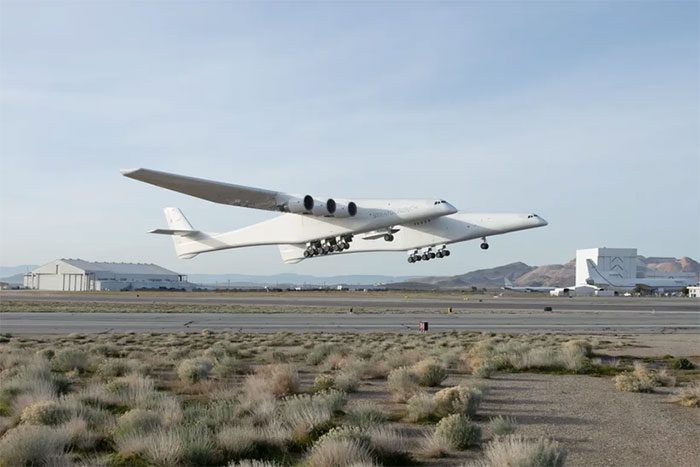Stratolaunch CEO Zachary Krevor announced that the Talon-A-1 vehicle has achieved high supersonic speeds nearing Mach 5 and has gathered a significant amount of valuable data for its customers.
On March 9, the American aerospace company Stratolaunch successfully conducted its first test flight of the new unmanned vehicle for hypersonic research.

The giant transport aircraft carrying Talon-A-1 takes off from the Mojave Air and Space Port. (Source: Stratolaunch).
Hypersonic refers to flight at speeds of at least Mach 5, or five times the speed of sound.
CEO Zachary Krevor stated that the Talon-A-1 vehicle reached high supersonic speeds approaching Mach 5 and collected a substantial amount of valuable data for clients.
However, he was unable to disclose specific details about altitude and speed due to exclusive agreements with customers.
The giant transport aircraft, equipped with six Roc engines, carried Talon-A-1 in the middle of its wings and elevated it before releasing the vehicle offshore near California.
The Talon, powered by a liquid-fueled rocket engine, concluded its flight by diving into the sea as planned.
In the future, a new version of Talon will be capable of landing on a runway for reuse.
Stratolaunch indicated that the main objectives of the flight included safely releasing the vehicle in the air, activating the engine, accelerating, climbing to altitude, and executing a controlled landing in the water.
The company considers this outcome a significant milestone in developing hypersonic testing capabilities and the first privately funded reusable vehicle.
Stratolaunch conducted two flights in December 2023 and February of this year, during which Talon was elevated with propellant but not released from the mothership.
Stratolaunch is headquartered at the Mojave Air and Space Port in the Mojave Desert, north of Los Angeles.
The Roc aircraft has a wingspan of 117 meters and features two parallel fuselages that resemble two large planes flying side by side.
The aircraft was developed by Microsoft co-founder Paul G. Allen, who intended to use Roc as a transport aircraft for spaceflights, carrying a satellite launch rocket beneath the center of its wing and releasing the payload from high altitude.
However, the project was canceled, and the new owners later decided to utilize it for flights involving hypersonic research devices.


















































